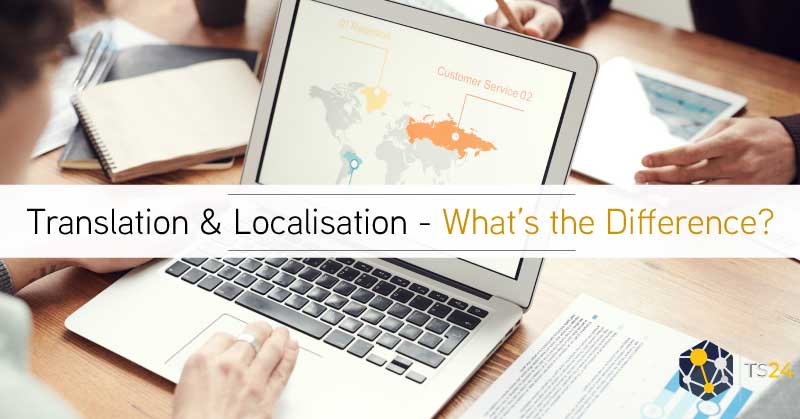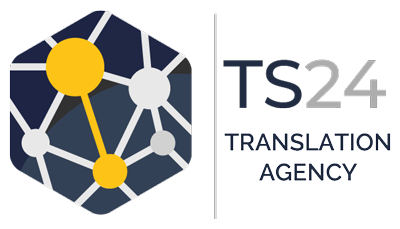The key differences between localisation and translation services
Businesses looking to expand usually consider both translation and localisation. Yet, most companies confuse these two terms with one another.
Understanding the significant differences between translation and localisation can benefit your business in countless ways. Apart from extending your brand’s reach, you can also include diversity in your operations.
To compete in a saturated and globalised economy, it is crucial to understand the true meaning of translation and localisation services. Read on to know everything about both of these terms.
What is Translation?
A translation is adapting textual content from one language to another. Translation services do not simply translate word-to-word; rather, they aim to keep the original meaning through vocabulary and idiomatic choices.
Translation services can be used for the following textual content:
• legal documents
• Websites
• Brochures
• User manuals
• Medical documents
• Technical publications
• Official certificates and documents
• Scientific journals
What is Localisation?
Localisation changes the entire content into different languages. Unlike translation, localisation doesn’t simply alter text from one language into another. Instead, it fulfils cultural differences. British English and American English are perfect examples of when localisation plays a vital role. Both are considered English, but there are several differences. These differences range from the spelling of words to the formatting of dates and measurements.
A native British or American speaker will be able to speak and understand either type of content. Still, some cultural differences between these two languages need catering. For example, the Americans use the term “apartments,” while the British use “flats” when referring to the same thing.
Localisation can be used for the following:
• Spelling
• Expressions
• Vocabulary and Idioms
• Imperial vs metric measurements
• Cultural references
• Currency units
• Date formats
When Should You Translate Your Content?
Research shows that 61.5% of online websites are written in English. While this estimate accounts for English as a common global language, it is not as common as expected. Surprisingly, it is only spoken by 1.3 billion people globally, making up only 17% of the world’s population.
Therefore, translating your website can allow you to connect with 83% of those who do not speak English.
The demand for other languages is rapidly increasing. So translating your content from English to any different language can expand your online presence, leading to better reach.
Here are some situations that determine that it might be the right time to translate your content:
• To increase your global customer traffic
• To expand the reach of your brand
• To stand out from your competitors
• To rank higher on SERP
When Should You Localise Your Content?
Localisation is an umbrella term, including language translation as its essential branch. Successful localisation can help your business reach new audiences worldwide, making them feel your brand is curated particularly for them.
Localisation focuses on the targeted audience’s culture, customs, and values. Unlike translations, it is not concerned with staying true to the original context. Localisation is perfect if you want to expand your business into different regions.
Language translation is excellent for catering to users in their native language, but history, culture, tone, and customs are just as crucial to making your content relevant in another market, especially in the marketing world. Geo-targeted online content generates six times more engagement than those globally targeted. Hence, content localisation is key to building an online presence to compete in today’s globalised market.
According to a survey, 72% of customers make a purchase decision on a website that displays product information in their native language. However, successful localisation is more than just translating the product description.
Proper localisation refers to creating an online customer experience that reaches and grabs the attention of an audience belonging to different locations, cultures, and languages. It means making your standard content accessible to anyone around the globe.
Relevancy is the key to online success. It gives your localisation strategies the power to appeal to customers from anywhere.
If you see the other side of the coin, you’ll be surprised by how hard it is for businesses to function without localisation. Brands with local references and limited visuals will drive away the attention of a diverse market.
Hence, adding different languages to your online brand improves its growth potential.
Translation and Localisation: What Are the Benefits of Both?
Translation and localisation go hand-in-hand. They both are more important than one might think. Translating and localising your content is inescapable if you don’t want to overlook the crucial part of the market.
Whether you have a healthcare website or an e-commerce store, translation and localisation can help you in countless ways. Here are some benefits of translation and localisation:
Better Traffic and Engagement
Translation and localisation both separately or collectively attract new audiences, resulting in more website traffic. They are especially important if you want to engage with a new market or audience.
For example, if a customer speaks Dutch and your website is present in French, there is no way he is going to understand your website content. Therefore, translating your site into Dutch and localising it as per their cultural accommodations can help.
Improves SEO
SEO is a crucial part of the survival of any online business. Both translation service and localisation techniques can aid in increasing the ranking chances.
Translating your website into multiple languages can invite different bots, making it easier to rank higher and be found on global Google searches.
Similarly, localisation can improve your visibility in a specific market. It can ensure your content stays relevant to a particular region and its audiences. As a result, it gets easier to rank higher for local SEO.
Outreach
Translating or localising your content is an excellent way to increase brand recognition in local and global markets. Interacting with customers in their native language will cultivate trust and enhance your brand’s recognition.
Customers often only engage with content relevant to their cultural and linguistic nuances. The good news is that translation and localisation can help in such cases.
Let’s summarise…
Whether you run a small business or lead a tech giant, localisation and translation services can help you expand your audience in different regions. Both of these terms go side-by-side. But before opting for any of the two, you must know their differences.
While translations adapt text, localisation changes the entire content into different languages to ensure understanding among audiences. Regardless of what your company chooses, translation and localisation will both help you reach new markets.
Posted By: TS24
Follow author on LinkedIn


